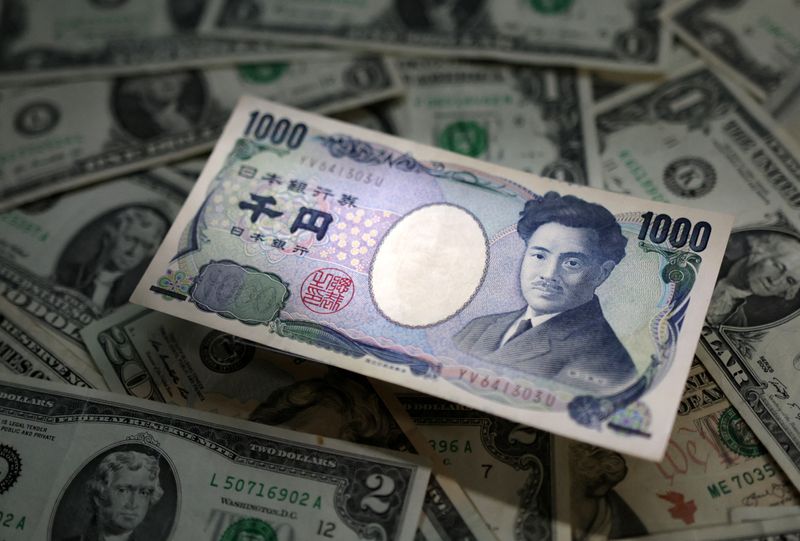Dollar steady ahead of inflation data, yen hits 4-week low

The dollar was bolstered on Wednesday by rising expectations the Federal Reserve is unlikely to cut rates until later this year ahead of crucial inflation readings this week, while the yen drifted to its weakest in four weeks.
The dollar was also lifted by rising Treasury yields after a lacklustre debt auction for sales of two-year and five-year notes that raised doubts about demand for U.S. government debt.
The euro was 0.09% lower at $1.0848 but on course for a 1.7% gain for the month, its first month of gains in 2024. Sterling was last at $1.27525, on course for a 2% gain in May.
Data on Tuesday showed U.S. consumer confidence unexpectedly improved in May after deteriorating for three straight months, but worries about inflation persisted and many households expected higher interest rates over the next year.
The mixed survey comes as markets contemplate the Fed’s next move, with traders pricing in 34 basis points of cuts this year compared with 150 bps of easing priced in at the start of 2024.
A rate cut in September is now priced in at 44%, the CME FedWatch tool showed, as still sticky inflation along with pockets of weakness in the world’s largest economy amid a strong labour market keep shifting expectations around U.S. rates.

Market focus this week will be on a slew of inflation reports, with German inflation data due on Wednesday and the wider euro zone’s reading on Friday.
The main event though will be when the U.S. core personal consumption expenditures (PCE) price index report – the Federal Reserve’s preferred measure of inflation – is released on Friday. Expectations are for it to hold steady on a monthly basis.
Against a basket of currencies, the dollar index was little changed at 104.7, inching away from the near two-week low of 104.33 it touched on Tuesday. The index is down 1.5% in May.
“FX markets continue to mark time in anticipation of core PCE data later this week,” said Christopher Wong, currency strategist at OCBC. “We should continue to see 104-105 holding up until the next catalyst comes along.”
The Australian dollar was little changed at $0.66485 after Australian consumer price inflation unexpectedly rose to a five-month high in April, adding to risks the next move in interest rates might be upward.

“Australia’s faster-than-expected April inflation again raises concerns about the final stretch of global inflation path after several months of disinflation,” said Charu Chanana, head of currency strategy at Saxo in Singapore.
Meanwhile, the yen touched a four-week low of 157.41 per dollar early on Wednesday as the currency inches back to levels that led to bouts of suspected interventions from Tokyo at the end of April and early May. It was last at 157.255.
The yen hit a 34-year low of 160.245 per dollar on April 29, resulting in at least two suspected interventions that week, with Japanese authorities estimated to have spent more than 9 trillion yen ($57.21 billion) to prop up the frail currency.
“Perhaps Japanese officials sound out verbal warnings again but without tangible action it’s likely dollar/yen marches towards the levels seen in late April,” Prashant Newnaha, a senior Asia-Pacific rates strategist at TD Securities.
The yen was also broadly weaker against other currencies. The pound rose 0.13% to 200.68 yen, the strongest since August 2008, earlier in the session while the euro touched a one-month high of 170.795 yen.
The Bank of Japan may raise interest rates if sharp falls in the yen boost inflation or the public’s perception of future prices move more than expected, board member Seiji Adachi said on Wednesday.
The yen, which is sensitive to Treasury yields, is down 10% for the year against the dollar but may yet scrape a monthly gain in May.
In Asian hours, the benchmark U.S. 10-year yield rose to 4.568%, the highest since May 3. [US/]